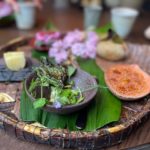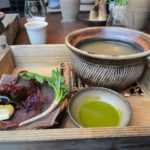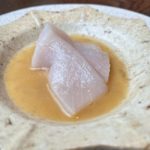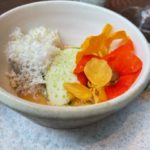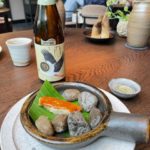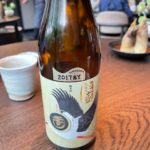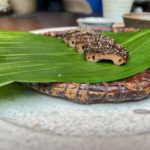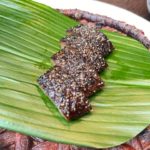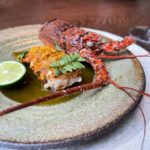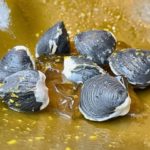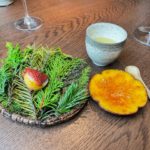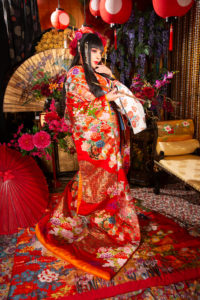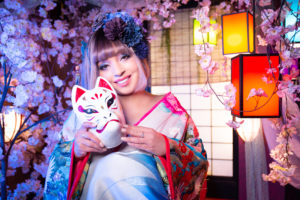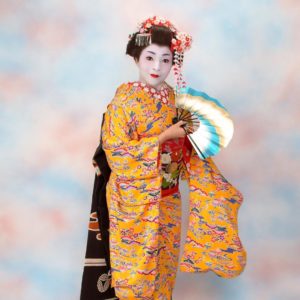Japan is my spirit country. Greater Tokyo is the world’s most populous metropolitan area and the country’s culture, finance, and government center. This is hard to fathom considering the cleanliness, quietness, and order you encounter everywhere you go. From the malls, subways, to the city streets you can find structure. Tokyo offers an eclectic mix of traditional and contemporary attractions. Japan during cherry blossom has been a bucket list trip since my first time there is 2010.
Public transportation and Ubers abound yet I do recommend staying in Shinjuku, Shibuya, Ginza, or close to the Tokyo Station. You may have to pay more for the hotel, yet you save on transportation costs. No matter where you stay it will be safe and clean.
Tokyo has developed a well-deserved reputation as a food lover’s dream destination, with a rich culinary heritage and a plethora of eateries. The food scene is characterized by a healthy respect for tradition married with a curiosity for experimentation, meaning that diners can experience time-honored classic dishes, innovative cuisine and everything in between. Moreover, Japan’s chefs typically place importance on using the freshest ingredients and creating a feast for the eyes as well as the palate, with dishes that look as good as they taste.
- Kimono shopping: There are shops with reasonably priced, high-quality vintage and contemporary kimonos.
- Japanese Bath House. Recommend: Thermae-Yu. Notes: Keep in mind many tradition onsen have policies regarding tattoos.
- Day trip to Mt. Fuji. Recommend: Take the train or go with an organized tour. Notes: If you plan on hiking the mountain check to ensure the trails are not closed for the season.
- Eat & Drink. Recommend: Alter Ego, SG Low, SG Club. Notes: Restaurants and bars in Tokyo are quite small so reservations are recommended.
KYOTO – The Cultural Capital – Temples & Tea
Noma Kyoto at Ace Hotel Kyoto ran from Wednesday through Saturday March 15th to May 20th 2023, with two seatings available every day – one lunch seating, and one dinner seating. We have traveled throughout Japan and this specific region for many years. The Noma team studied and researched the history and the food culture, in particular kaiseki cuisine. For their Kyoto menu, they sourced ingredients from local farmers, hunters, fishmongers, and foragers and worked very closely with this local network of suppliers. The menu reflected the sakura season in Kyoto, yet, was not a Japanese restaurant experience.
We had the good fortune of staying at the host site for Noma Kyoto: Ace Hotel Kyoto. The phrase “location, location, location” fits this property perfectly. It’s centrally located on Karasuma Street, surrounded by the city’s neat grid-lined streets, home to small restaurants, chic boutiques, centuries-old miso stores and cafés. The bullet train from Tokyo took us to Kyoto Station, where we took the subway to the hotel which has direct access to Karasuma-Oike station, just three stops away. Kyoto International Manga Museum, the Museum of Kyoto and Nishiki Market are not far on foot (the hotel has lightweight tokyobikes for exploring).
Japan’s reputation as being short on space does not apply to the rooms at the Ace Kyoto. From the moment you enter the vibe is Japan meets the US: a hip industrial atmosphere and maximalist artworks are layered with Japanese craftsmanship, from the oversized ceramic pots and hand-hammered copper doughnut-shaped front desk in the lobby to the bright retro-tinged textile patterns sitting next to turntables in the guestrooms. The rooms and bathrooms are spacious. I even relaxed in the large soaker tub to alleviate some of the residual jetlag stiffness.
THINGS TO DO
Kyoto’s temples & teas are always high on all tourists lists. As a reiki master I recommend all energy healers take a pilgrimage to Mount Kurama, the birthplace of reiki. Other sites to take in: Nishiki Market, Kinkaku-ji, Fushimi Inari Taisha, Bamboo Forest Street, Arashiyama Kimono Forest, and a tradition tea ceremony.
As many of you who follow my adventures know I adore professional photoshoots when I travel. Images and videos from your camera are great’ however, if you are yearning for an elevated and unique experience to memorialized your vacation I recommend a professional photoshoot. In Japan maiko, geisha, oiran, or japonisme photo studios are prevalent, especially in Kyoto. The quality, efficiency, and professionalism is exceptional. During my first visit to Kyoto I did a maiko photoshoot and this time around I chose an oiran shoot.
Learn more about these art forms and hierarchies at Maikoya. I highly recommend Studio Esperanto. Please factor in time after your shoot because the photo team will provide you with three printed photos, which takes time to process.
What are your favorite places and activities in Japan?


